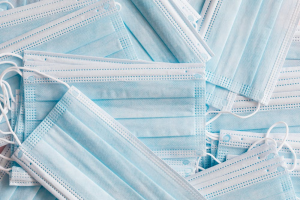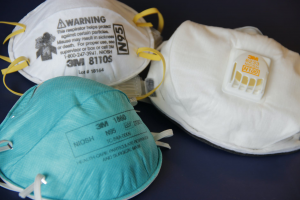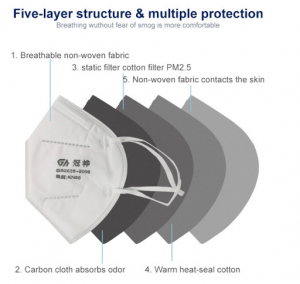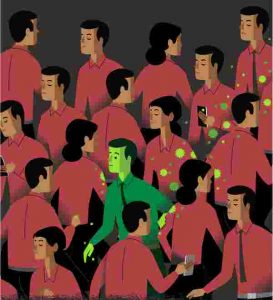“This is a, I would say, senseless dividing line,” said Doug Burgum, governor of North Dakota,
his voice catching as he talked of the rows that have broken out in his state over the wearing of face-coverings. There are similar spats elsewhere in America, for masks have become the latest aspect of the culture war that has emerged there over how to deal with COVID-19. Some shops refuse entry to mask wearers and Mike DeWine, the governor of Ohio, has rescinded an order requiring people to wear them, saying that he “went too far”.
Elsewhere in the world, by contrast, there is increasing acceptance that mask-wearing is a good thing. On May 5th, for example, the Royal Society, Britain’s top science academy, concluded that masks “could be an important tool for managing community transmission”. This is not so much because they protect the wearer–the normal reason people may put them on in times of pestilence–but rather because they stop the wearer from infecting others.
So let’s see how the mask works when we put it on?
There are many kinds of masks, but two main types of them that we use usually to protect our health during the epidemic: normal surgical mask and N95 respirator.

The surgical mask is originally designed to stop liquid sputtering and bacteria. That’s why the inner liner is rough and the outer layer is smooth. Later, the mask also works for stopping infection. N95 means the mask can prevent 95% of bacteria. Different from the surgical mask, N95 is a respirator. When using N95, the air can only be exchanged through the mask cause it is sealed. So a standard N95 has to pass a fitting test to make sure the seal is good when people speak or breathe deeply. But it’s more difficult to breathe if the sealing is better. N95 isn’t suitable for continuous high-intensity work.

Well, it sounds better to wear an N95 to prevent COVID-19. However, the minimum aperture of fiber is 0.3 micrometers, which is more than COVID-19. The biggest COVID-19 is not more than 0.15 micrometer. In conclusion, the mask can’t stop the virus totally cause they are alive although you wear several masks. But the mask can delay the transmission of the virus. Recent research from MIT shows the speed of droplets after sneezing is 35m/s becoming 0 after 2 meters and in the air spreading 8 meters. If the patients with COVID-19 don’t wear masks, it’s very difficult to prevent the virus even healthy people wear N95. If they can wear a mask especially an N95, most of the virus could stay at the mask for a while. The experts recommend people to change another new mask every 4 hours. Otherwise, the virus on the mask would make yourself or other people get infected.

Above all, everyone should put on masks in public places, and it is more significant for virus carriers to wear masks compared to healthy people. Most people think masks are not necessary for healthy people as long as the patients have worn masks. Most reports show that people who test positive often do not have symptoms. Research published last month in Nature Medicine, by Xi He of Guangzhou Medical University and Eric Lau of Hong Kong University, suggests that 44% of cases are caused by transmission from people without symptoms at the time of transmission. We can’t identify who is on earth healthy or not before medical inspection if they don’t have any symptoms.

To break the chain, it behooves even the symptomless to assume that they might be infected. Covid-19 is transmitted, above all, by virus-laden droplets of spit. Researchers at Hong Kong University put cages of healthy hamsters next to cages of infected ones, with a fan in between drawing air from the infected to the healthy cage. They sometimes also placed a stretched-out face mask in the air stream. With no interposed mask, two-thirds of the healthy hamsters were infected within a week. With a mask interposed close to the healthy hamsters (the equivalent of a healthy person wearing a mask), one-third were. With the mask close to the infected hamsters, only a sixth was.
